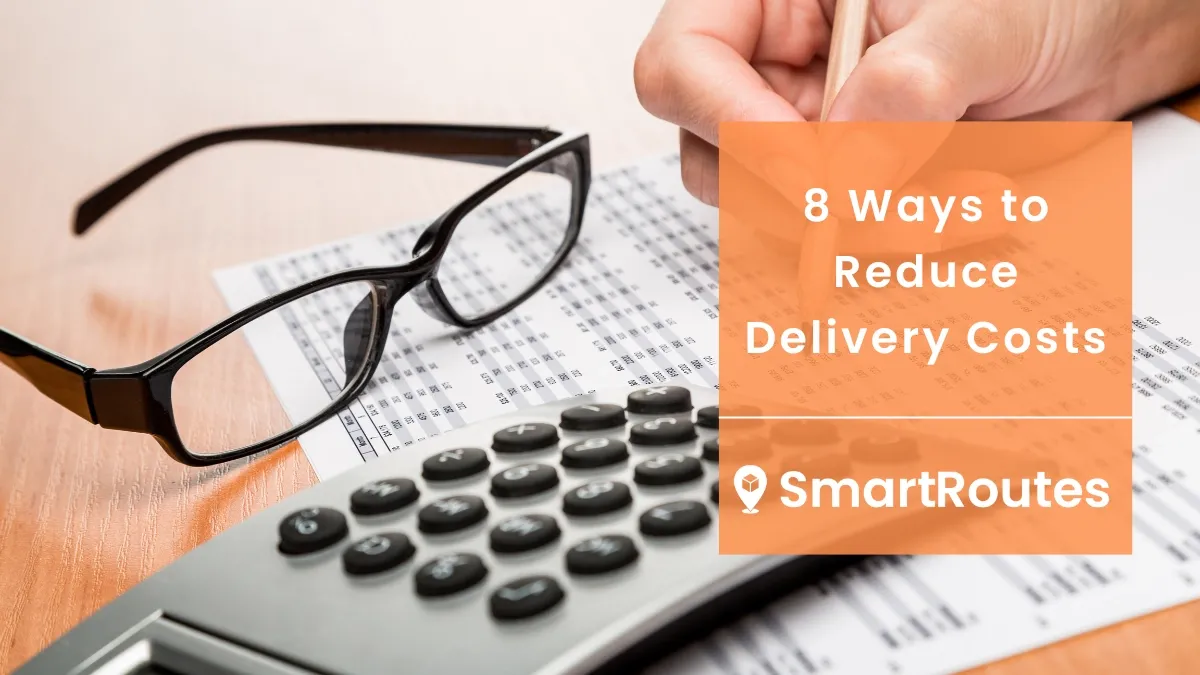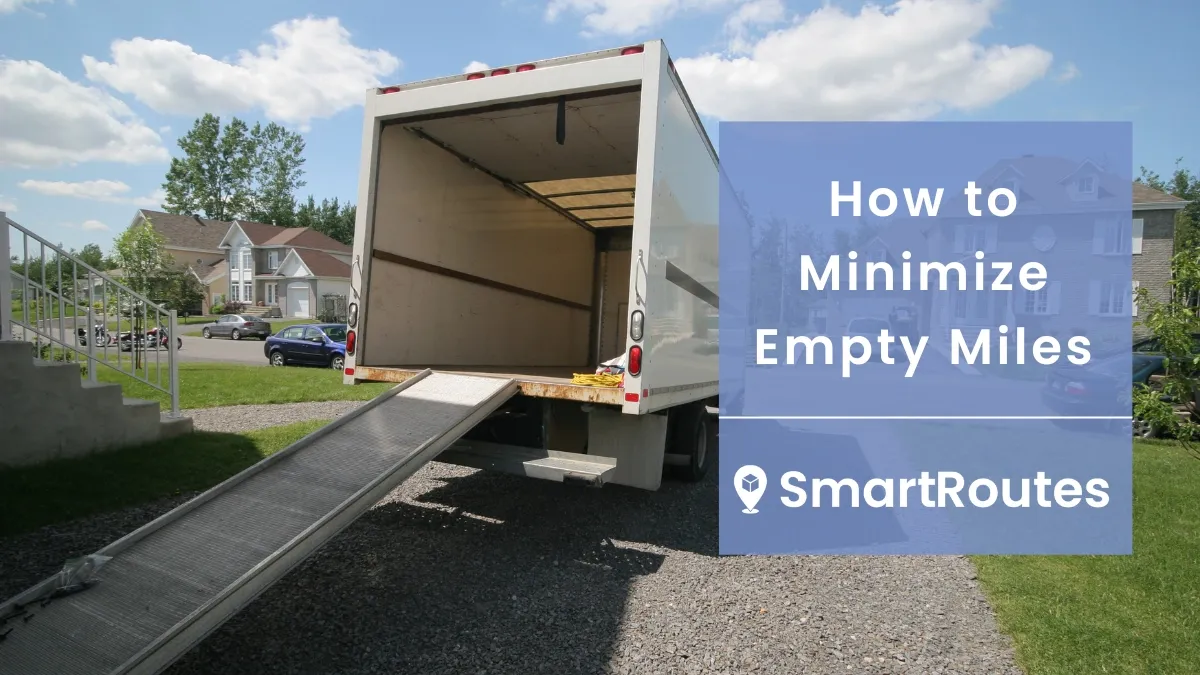How to Plan Delivery Routes To Avoid Unnecessary Mileage
‘Unnecessary Mileage’ occurs when delivery drivers backtrack to places they've already been. In this blog, we show you how to avoid these extra miles!
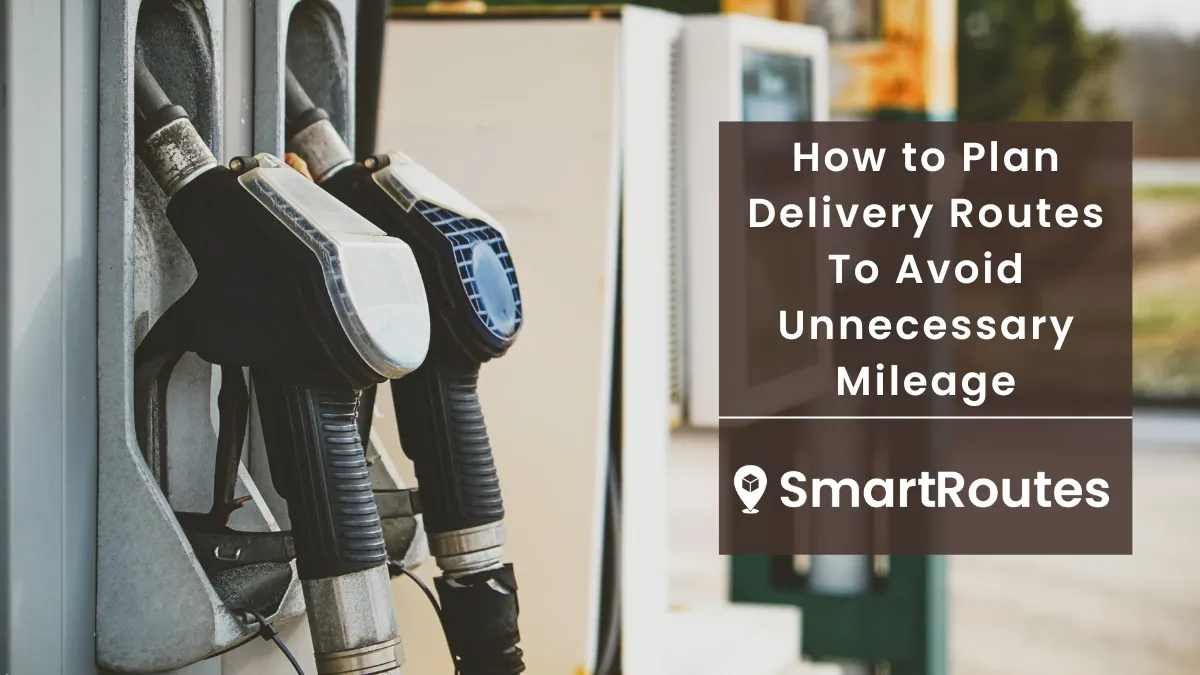
Efficiency is the lifeblood of delivery services, and nowhere is this more crucial than in the last mile—the final stretch where packages reach their destination. This stage is often seen as the most expensive leg of the entire delivery process. And a significant contributor to these costs? Unnecessary mileage!
The last mile constitutes a substantial 40-50% of the entire supply chain cost, and within this, fuel expenses alone can range from 10-25%. Armed with this knowledge, it becomes imperative to minimize mileage wherever possible so they stop eroding profits!
In this blog, we will take a look at the nuances of unnecessary mileage and we'll navigate through strategies and solutions, guiding businesses on how to efficiently plan delivery routes to reduce unnecessary mileage and streamline last-mile operations.
What Do We Mean by ‘Unnecessary Mileage’?
How to Plan Delivery Routes to Avoid Unnecessary Mileage
Benefits of Reducing Unnecessary Miles
What Do We Mean by ‘Unnecessary Mileage’?
Let's break it down. For delivery drivers, ‘Unnecessary Mileage’ is when they backtrack to places they've already been, create a tangled mess of routes, or simply spend more time on the road for one delivery than they really need to.
Think of it as taking the scenic route when the destination is just around the corner—only, in this case, it's costing more money. This extra mileage adds up, and before you know it, it's chipping away at the profit margins. Unnecessary mileage isn't just about taking the long way; it's about higher costs, less efficiency and a delivery process that could be a whole lot smoother.
Reduce Unnecessary Mileage with SmartRoutes Route Planning Software
Streamline your entire delivery process, all from one platform
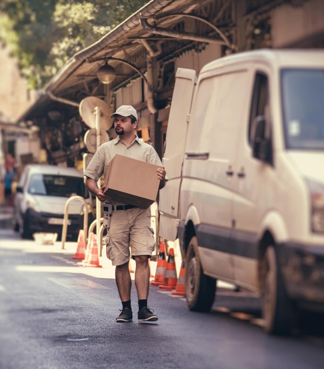
Causes of Unnecessary Mileage
Let's delve into what causes unnecessary mileage to occur:
Inefficient Routes:
Though a necessary task, manual route planning can often lead to unintended inefficiencies. Drivers on the road, equipped with maps and relying on their own judgment and navigating their list of delivery drops. Even if pre-planned, routes are often left to be sub-optimal. In this process, human error becomes a contributing factor to inefficiency.
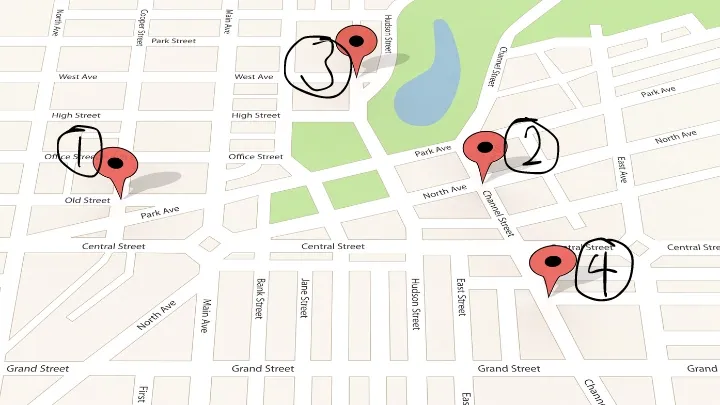
A driver, even with the best intentions, might opt for a seemingly straightforward path according to the map. However, the reality might unfold as a crisscrossing with previous routes, with distances between stops turning out to be greater than initially anticipated. Additionally, the challenge of memorizing an extensive list of routes may lead to scheduling deliveries in the same area on different days when a more consolidated approach would be beneficial. This inefficiency directly translates into unnecessary mileage by making drivers spend more time on the road than necessary.
Lack of Fleet Oversight:
In the absence of a fleet management system, it’s difficult to notice routing inefficiencies. A delivery driver, without real-time guidance and feedback, might opt for paths that seem convenient at the moment but, unbeknownst to them, contribute to unnecessary detours and elongated routes.
Idle time can lead to further inefficiencies. Without someone there ensuring optimal route adherence and addressing potential delays, drivers may find themselves idling away precious minutes that could be better utilized on the road.
Implementing fleet management ensures; optimal routes, efficient resource utilization, and ultimately, a more streamlined and cost-conscious last-mile delivery operation.
Unpredictable Customer Availability:
In the absence of clear communication channels or tools to gauge when customers are ready to receive their deliveries, drivers may find themselves caught in a loop of multiple trips to the same location. This unpredictability is a contributing factor to unnecessary mileage, impacting both time efficiency and fuel consumption.
It’s a common scenario where a driver may arrive at a location only to find that the customer is not available to receive the delivery. Without prior knowledge or communication, the driver may need to return later or on a different day, resulting in additional miles and time spent on the road. Multiply this by several instances and it becomes a significant contributor to overall unnecessary mileage.
To address this challenge, streamlining communication with customers is paramount. Implementing tools or processes that allow customers to communicate their availability or preferences in advance can make a substantial difference. This could include providing delivery time windows, allowing customers to reschedule, or even utilizing real-time tracking that keeps customers informed about the impending delivery.
Customer Time Slot Choices:
Giving customers the flexibility to choose their preferred delivery time slots undoubtedly enhances convenience. However, without a well-thought-out strategy, this customer-centric feature can inadvertently become a source of inefficiency in route planning. (The key lies in how these time slots are structured and grouped!)
When time slots lack sensible grouping, drivers may find themselves inadvertently crisscrossing through the same geographical areas repeatedly. Picture this: a driver delivering packages in the morning to one part of the town, only to return to the same area later in the day for another set of deliveries. This repetitive back-and-forth significantly increases the overall mileage.
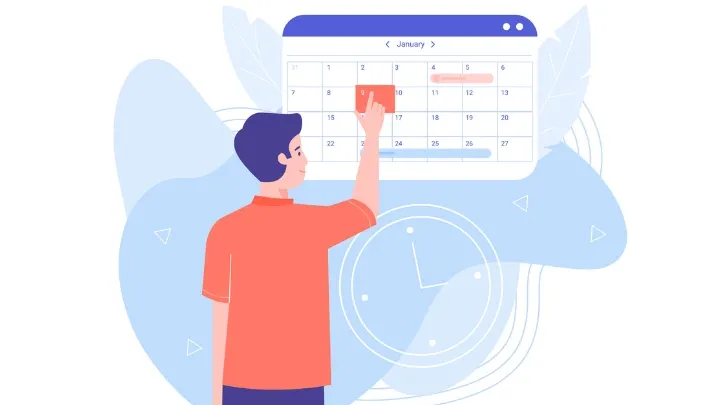
To mitigate these inefficiencies, try grouping time slots together. This involves clustering deliveries based on geographic proximity and optimizing routes to ensure that drivers move through an area once, minimizing unnecessary overlaps.
How to Plan Delivery Routes to Avoid Unnecessary Mileage
The good news is that with the right strategies and planning in place, unnecessary mileage can be significantly reduced resulting in significant time and cost savings. Here’s how we recommend going about planning delivery routes to avoid unnecessary mileage:
Use Route Planning Software
One of the standout benefits of route planning software is its ability to automatically calculate the shortest routes. No more relying solely on human intuition or cumbersome manual calculations. The software takes into account a plethora of factors, from traffic patterns to road conditions, ensuring that the chosen routes are not only the shortest but also the most time-efficient.
Delivery software allows users to set customized parameters, such as delivery time expectations, driver availability, and so on. The software tailors routes to align with specific business needs. Whether it's ensuring timely deliveries for perishable goods or accommodating specific time windows, the software adapts to the unique requirements of each delivery.
Set Up Delivery Zones:
Setting up zones or territories involves segmenting the delivery area into strategically defined geographical sections. This segmentation ensures that drivers cover specific territories in a logical sequence, eliminating the need for unnecessary backtracking. When a driver is assigned to a specific zone, deliveries are consolidated within that geographic zone. This prevents the driver from crisscrossing different zones for each delivery, significantly reducing the overall mileage and optimizing the route for efficiency.
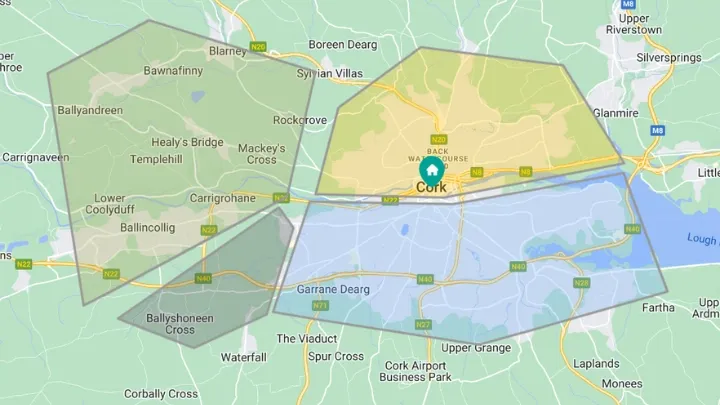
Zones not only streamline the driver's journey but also enhance resource allocation precision. By assigning drivers to zones based on their proximity, businesses can ensure that each driver operates within a radius that minimizes travel time between stops. This thoughtful allocation of resources contributes to a more streamlined delivery process, reducing both time and fuel expenses.
Dispatch from Multiple Depots based on Proximity:
If your business uses multiple depots, then we have a simple yet impactful suggestion – dispatch drivers from the depot closest to the delivery area. By strategically aligning drivers with depots based on proximity, businesses can significantly reduce the initial leg of the journey. This means drivers spend less time traversing from the depot to the delivery area, leading to more efficient routes and a reduction in overall mileage.
Beyond reducing the distance to the delivery area, proximity-based dispatching also minimizes empty miles. When drivers start their journey from a nearby depot, the likelihood of empty miles – travel without a load – decreases. This approach is particularly beneficial when considering both the environmental impact of fuel consumption and the operational cost associated with inefficient resource utilization.
Consolidate Collections and Deliveries:
By combining collections and deliveries in the same area or building, businesses can maximize their capacity utilization of each trip. This means that a driver, already present for a delivery, can seamlessly incorporate nearby collections, reducing the need for separate trips and, subsequently, minimizing empty miles.
Beyond the reduction of empty miles, the combined approach also maximizes the capacity of each delivery vehicle. Rather than dispatching separate vehicles for collections and deliveries, a single vehicle can accommodate both functions when they occur in close proximity. This optimization of vehicle capacity not only enhances resource utilization but also contributes to a reduction in the overall fleet needed for the operation. Businesses can leverage route planning software to ensure that the delivery vehicle has sufficient space to handle collections without compromising the efficiency of the overall route.
Implement Fleet Tracking Software:
The cornerstone of fleet tracking is the real-time visibility it affords businesses. With GPS technology and advanced tracking systems, businesses gain a live, bird's-eye view of the entire fleet's movements. This level of insight allows for proactive decision-making based on accurate, up-to-the-minute data.
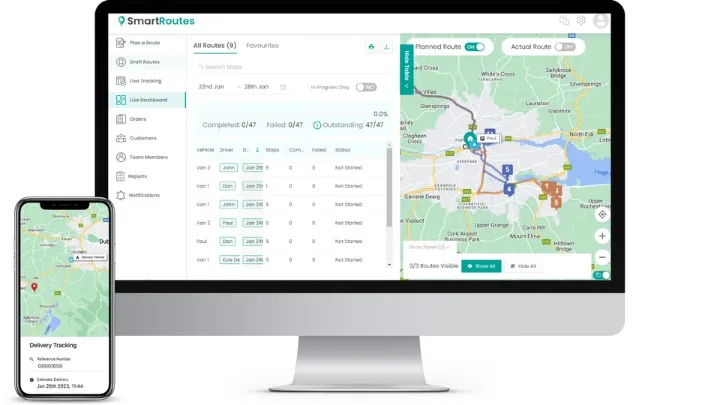
Fleet tracking helps in identifying potential bottlenecks within the delivery process. By analyzing the real-time data, businesses can pinpoint areas where drivers may encounter delays, whether due to traffic congestion, unexpected road closures, or other unforeseen challenges. Identifying these bottlenecks early enables businesses to proactively address issues before they escalate, minimizing disruptions and optimizing routes.
Benefits of Reducing Unnecessary Miles
Cost Reduction: The reduction of unnecessary miles translates directly into cost savings. By streamlining routes and minimizing the distance traveled, businesses can achieve a substantial reduction in the cost per delivery, leading to a cascade of financial benefits.
Fuel Efficiency: One of the most significant cost components in last-mile delivery operations is fuel expenses. Reducing unnecessary mileage directly correlates to lower fuel consumption. By optimizing routes and minimizing detours, backtracking & re-deliveries, businesses can significantly decrease the amount of fuel consumed per delivery. This not only reduces direct expenses but also aligns with sustainability efforts, minimizing the environmental impact of fuel consumption.
Operational Efficiency: Efficient route planning translates into improved operational efficiency. By eliminating unnecessary miles, businesses can achieve higher delivery densities within the same operational window. Drivers spend less time on the road, allowing for the completion of more deliveries within a given timeframe. This optimization of resources, coupled with reduced travel time, contributes to overall cost savings.
Vehicle Maintenance and Wear: Reducing unnecessary mileage doesn't just save on fuel costs; it also extends the lifespan of delivery vehicles. When vehicles travel fewer miles, their wear and tear decrease proportionately. This reduction in wear not only lowers maintenance and repair costs but also delays the need for vehicle replacements.
Labor and Time Savings: Efficient routes mean less time spent on the road for drivers. By minimizing unnecessary miles, businesses can optimize the time drivers spend on deliveries. This not only enhances driver productivity but also reduces labor costs associated with extended delivery times.
Competitive Edge: Beyond immediate cost savings, the ability to reduce unnecessary mileage positions businesses for a competitive edge. Optimized routes mean faster and more reliable deliveries, leading to increased customer satisfaction. Satisfied customers are more likely to remain loyal and spread positive word-of-mouth.
Reduce Unnecessary Mileage with SmartRoutes
SmartRoutes is a comprehensive solution designed to overhaul your delivery operations. The platform works to optimize your entire delivery process and with a big emphasis on route optimization, we have helped 00’s of clients minimize unnecessary mileage while maximizing delivery efficiency.
Experience SmartRoutes firsthand with a risk-free 7-day free trial. With this trial, you can try out our suite of features and start reducing your unnecessary miles from day one!
Frequently asked questions
1. How does optimizing delivery routes reduce operational costs for businesses?
Optimizing delivery routes directly impacts operational costs by minimizing unnecessary mileage. It leads to reduced fuel consumption as drivers cover shorter distances, thereby cutting fuel expenses significantly. Moreover, efficient routes optimize resource utilization, enabling more deliveries within a specific timeframe, which decreases labor costs and boosts productivity. Reduced wear and tear on vehicles also translate into lower maintenance and repair expenses, contributing further to cost savings.
2. What are the key factors contributing to unnecessary mileage in delivery operations?
Several factors contribute to unnecessary mileage in delivery operations. Inefficient routes due to manual planning or human errors, lack of fleet oversight resulting in drivers taking suboptimal paths or idling, customer time slot choices without considering route optimization, and the absence of tools to gauge customer availability are primary factors. These lead to drivers backtracking, crisscrossing routes, or spending more time driving per delivery than necessary, elevating the overall mileage.
3. How does efficient route planning contribute to environmental sustainability?
Efficient route planning significantly contributes to environmental sustainability by reducing the environmental impact of delivery operations. It minimizes fuel consumption and emissions by optimizing routes, resulting in fewer miles traveled and decreased carbon footprint. The reduction in fuel usage also aligns with sustainability goals, preserving natural resources and decreasing the ecological impact associated with delivery vehicles' emissions.
4. Can manual route planning be as effective as using route planning software?
Manual route planning, though feasible, often lacks the precision and efficiency offered by route planning software. Human errors, suboptimal path selection, and limitations in considering real-time factors make manual planning less effective. Route planning software, leveraging advanced algorithms and real-time data, calculates the most efficient routes, optimizing for factors like traffic, road conditions, and delivery time expectations. It not only reduces unnecessary mileage but also provides agility for on-the-fly adjustments, making it more effective in optimizing delivery routes.
If you enjoyed this blog, you might also be interested in:
